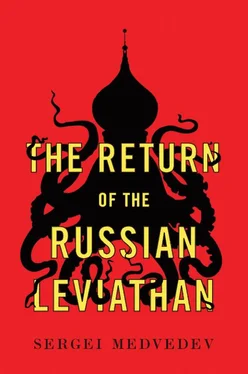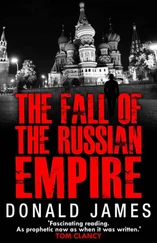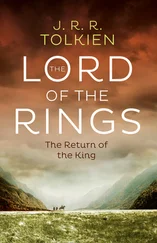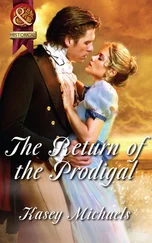Second, there is the absurd suicidal nature of the repressions, the total madness and irrationality of turning the terror against the country. Much research has shown that the terror was ineffective economically (labour productivity in the camps was half what it was among free people), and destructive for the state and national security; the war was won against incredible odds in spite of the terror, not thanks to it. And here there is one more feeling that interferes with the memory: scepticism that such a thing could ever really happen. The historian of the Holocaust, Saul Friedländer, wrote that a deep disbelief – a refusal to believe in the reality of what had happened – was a typical reaction to the Nazi terror. [15] https://www.theguardian.com/books/2007/sep/16/historybooks.features .
And this is exactly what happens with the victims and the witnesses of the GULAG. What’s more, our contemporaries refuse to believe in the reality of Stalin’s terror because it is so absurd and unimaginable. ‘The human brain is simply not capable of imagining the crimes that were committed’, said the writer Varlam Shalamov, who left us the most terrifying accounts of the GULAG in his work, The Kolyma Tales . [16] Varlam Shalamov, The Kolyma Tales , (Penguin Books, Harmondsworth, 1994; Trans John Glad).
The main difference, of course, was that in Germany the criminal regime suffered a military defeat, the country underwent occupation and enforced de-Nazification, which continued for decades. Nothing of the sort could have happened in the USSR, where victory seemed to justify the repressions, which began again with renewed vigour in 1946, and where the regime, with a few changes and modifications, has survived up to the present as the philosophy and practice of chekism , which is considered to be quite respectable these days. Etkind points out how incomplete was Khrushchev’s de-Stalinization programme, because it basically left the ruling elite untouched, making Stalin the scapegoat and removing the question of the criminality of the regime itself. Mourning could never be fully expressed in the USSR and post-Soviet Russia in terms of the structural reasons while there are still people and institutions in power who are the direct descendants of Stalin’s repressions.
As a result, Germany and Russia created completely different types of national memory. In Germany, that memory is ‘hard’ (as it is in France and more generally in Europe), based on concrete objects: monuments, memorial camps and, more broadly, institutions that give a legal and material guarantee that the crimes of the past will not be repeated. But in Russia it is a ‘soft’ memory: personal memoirs, films, works of literature, popular and alternative histories. Most of Etkind’s book is devoted to this ‘soft’ memory about the catastrophe of Stalin’s terror, which is dispersed throughout Soviet and post-Soviet culture. In living, breathing and the polyphonic score of his book, the voices are intertwined with those of the writers Nadezhda Mandelstam and Yevgenia Ginzburg, Vasily Grossman and Andrei Sinyavsky; the philologists Dmitry Likhachev and Mikhail Bakhtin; the drawings from the camps by the artist Boris Sveshnikov and the ‘barrack school’ of art, which grew up in the postwar years in the Moscow suburb of Lianozovo. There is a separate chapter devoted to the films of the director Grigory Kozintsev – Hamlet (1964) and King Lear (1970). This is no coincidence; just as in his tragedies Shakespeare reinterpreted the traumatic experience of the Reformation, so Soviet culture looked to Shakespeare to reflect upon our national catastrophe.
Etkind compares memory to a saline solution: if you don’t heat it and stir it, but gradually saturate it, then at some point it will start to crystallize and memory will solidify as monuments, institutions and moral norms. In Russia, memory is constantly being shaken up, so it’s in a ‘liquid’ state and cannot crystallize. As the author points out, ‘to continue the analogy of the temperature of the solution, a crucial condition for the crystallization of memory is social consensus; a low level of consensus crushes the crystallization of memorials, but strengthens the fermentation of memory among the minority who remember and reflect’. The inability of contemporary Russia to come to terms with its trauma and to work through the mourning for the victims of the GULAG speaks about the desperately low level of social trust, about the atomized society, the social anomie.
This unceasing fermentation of memory overflows in modern Russia in literary texts, oral legends and in narratives of mourning: in the ‘magical realism’ of Yury Mamleyev, Vladimir Sorokin, Viktor Pelevin and Vladimir Sharov, which Etkind compares with the magical realism of Latin American prose; in the ‘magical historicism’ of the Russian political technologists and propagandists and in the pop history of all kinds of re-enactors and of books about time travellers who turn up in different eras in order to change the course of history.
The ghostly visions of Russian writers, filmmakers, critics and even politicians extend the work of mourning into those spaces that defeat more rational ways of understanding the past. In a land where millions remain unburied, the dead return as the undead. They do so in novels, films and other forms of culture, that reflect, shape and possess people’s memory. [17] Alexander Etkind, Warped Mourning: Stories of the Undead in the Land of the Unburied (Stanford University Press, 2013, p. 245).
Back in 1993, the literary critic and, at the time, an adviser to President Yeltsin, Marietta Chudakova, suggested that the writings about the camps by Varlam Shalamov, Alexander Solzhenitsyn and Vasily Grossman will ‘carry out the function of a Russian Nuremberg Process’. [18] As cited in The Ashgate Research Companion to Memory Studies , edited by Siobhan Kattago (Routledge, 2016, p. 255).
But this didn’t happen. Moreover, the large number of texts and cultural artefacts worked as an overflow valve, and let out the steam of a social discussion. In this sense, we can say that yet again Russia produced first-class culture but poor politics; instead of institutions, memorials or morality, it produced texts, but did not create any guarantees that the terror would not return. Here we have the essence of Russia’s ‘warped mourning’: culturally productive, but politically destructive, producing pathological post-traumatic politics and a divided society.
Unfortunately, the author’s narrative ends at the start of 2012, at the very peak of the ‘Bolotnaya protests’ and the hopes for political change. It would be interesting to continue it to the present and study the Russian politics of Vladimir Putin’s third term in office in terms of post-catastrophic consciousness, to try to understand Putinism as a type of ‘warped mourning’. In actual fact, this is a mimetic secondary policy, founded on a feeling of loss and resentment, trying to justify itself and resurrect outdated historical forms. It is not a new Stalinism (there are neither the economic nor the psychological resources in modern Russia for such a thing), but it is a type of post-traumatic reaction, which Freud called not nostalgia but melancholy, an unavoidable partner of mourning, which causes memory to turn into imagination. The work of the imagination and of ‘magical historicism’ in the rhetoric of Putin’s regime is unusually strong: this is where lie the origins of the cult of the Victory and the battle with imaginary ‘fascism’ in Ukraine and in the West, the mimetic Stalinism of the conservative propagandists, the calling up of the ghosts of the past, from Ivan the Terrible to Marshal Zhukov. Herein lie, too, the reasons for the extraordinary resilience and popularity of this post-traumatic resentment among the masses: people begin to compensate for their own fears, humiliation, loss and lacunae in their memory with the melancholic worry about ‘loss of empire’, and they replace the memory of the repressions with the illusion of geopolitical greatness. In this sense, Putin’s regime, with its unprecedented popular support, is the consequence of unprocessed mourning.
Читать дальше












